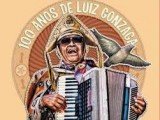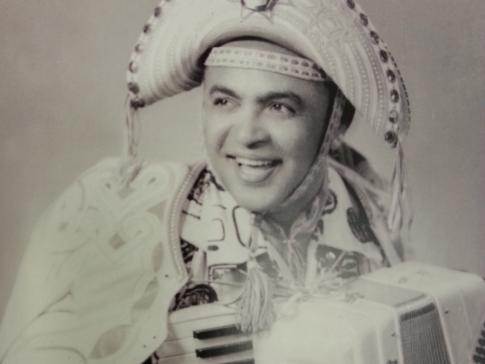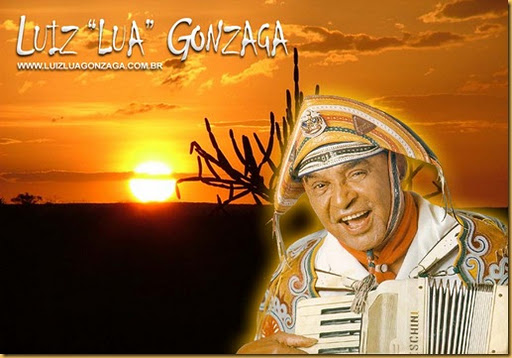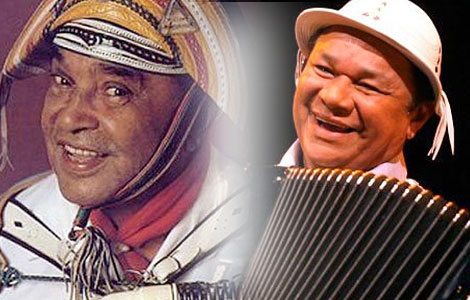Este post também está disponível em:
Português
English

Luiz Gonzaga (1912-1989) was a Brazilian musician. He was an accordion player, singer and songwriter, and received the title of “King of Baião”. He was responsible for the valorization of the Northeastern rhythms, took the baião, xote and xaxado, to the whole country.
The song “Asa Branca” made in partnership with Humberto Teixeira, recorded by Luiz Gonzaga on March 3, 1947, became the anthem of northeastern Brazil.
Luiz Gonzaga (1912-1989) was born in Fazenda Caiçara, in Exu, sertão de Pernambuco, on December 13, 1912. Son of Januário José dos Santos, the master Januário, “sanfoneiro de 8 baixos” and Ana Batista de Jesus.
The couple had eight children. Luiz Gonzaga had been playing the accordion since he was a boy. At the age of 13, with borrowed money, he bought his first accordion.

In 1929, because of a courtship, forbidden by the girl’s family, Luiz Gonzaga flees to the city of Crato in Ceará. In 1930 he goes to Fortaleza, where he joins the army. With the Revolution of 30 travels around the country.
In 1933, while serving in Minas Gerais, he failed a competition for a musician in the army, and became the bugler of the troops. He takes accordion lessons from soldier Domingos Ambrósio.
Luiz Gonzaga leaves the army after nine years without news of his family. He went to Rio de Janeiro and began to perform in bars, cabarets and fledgling programs. In 1940 he participated in the Rádio Tupi’s Calouros program and won first place with the song “Vira e Mexe”.
Playing as an accordion player for the duo Genésio Arruda and Januário, he is discovered and taken by the record company RCA Vitor, to record his first record.
The success was fast, several other records were recorded, but only on April 11, 1945 he recorded his first record as an accordion player and singer, with the song “Dança Mariquinha”.
On September 23, his son Gonzaguinha was born, the fruit of his relationship with the singer Odaléia Guedes. That same year he meets his partner Humberto Teixeira.
After 16 years Luiz returns to his homeland. He goes to Recife and performs on several radio programs. In 1947 he records “Asa Branca”, made in partnership with Humberto Teixeira.
In 1948 he marries singer Helena Cavalcanti. In 1949 he took his family to live in Rio de Janeiro. The partnerships with Humberto Teixeira and Zédantas yielded many songs. Gonzaga and his band perform in various parts of the country.
In 1980, Luiz Gonzaga sings for Pope Paul II in Fortaleza. Sings in Paris at the invitation of Amazonian singer Nazaré Pereira. He receives the gold Nipper award and two gold records for the album “Sanfoneiro Macho”.
In 1988 he separates from Helena and takes up a relationship with Edelzita Rabelo.
Luiz Gonzaga is hospitalized in Recife, at Santa Joana Hospital, on June 21, 1989, and on August 2 he dies.
In 2012, the 100th anniversary of Luiz Gonzaga’s birth is celebrated. The film “De Pai Para Filho” is released, narrating the relationship between Gonzaga and Gonzaguinha. The artist receives several tributes throughout the country.
Successes of Luiz Gonzaga
- Asa Branca
- Luar do Sertão
- Súplica Cearense
- A Feira de Caruaru
- No Meu pé de Serra
- A Triste Partida
- Assum Preto
- Olha Pró Céu
- Balance
- Eu Paraíba
- Pau de Arara
- Cintura Fina
- Danado de Bom
- Riacho do Navio
- Xote das Meninas
- No Ceará Não Tem Disso Não
- Numa Sala de Reboco
- Respeita Januário
- Pagode Russo
- Último Pau de Arara
- O Fole Roncou
- Zé Matuto
- Dezessete e Setecentos
- Dança Mariquinha
- Baião de Dois
- ABC do Sertão
Biography of Luiz Gonzaga the ” Rei do Baião”.
Bahia.ws – Guia de Turismo e Viagem da Bahia, Salvador de Nordeste





















